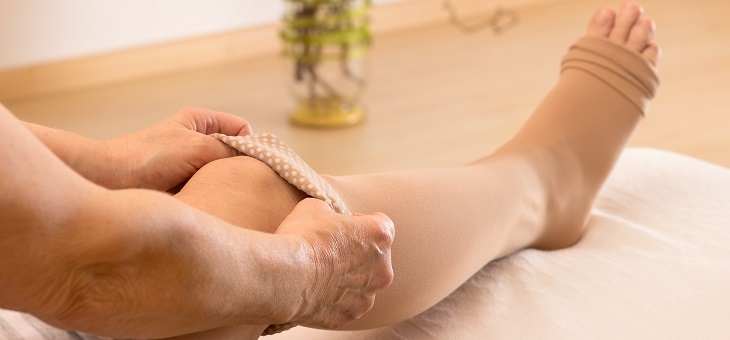Nancy is about to fly non-stop from Perth to London and is concerned that because she is 63, she may develop deep-vein thrombosis issues. Physiotherapist Jason Lee offers advice.
Nancy:
I am heading to London next week on a Qantas Dreamliner flight. I’m flying from Melbourne to Perth, which is about four-and-a-half hours, then the Perth-to-London 17-hour marathon. I have poor circulation and have had a lot of treatment for varicose veins over the years. Apart from that, I am fairly fit for my age (63). Should I be concerned about a 17-hour flight? I know they say to walk around, but it’s actually not that easy when you fly economy. And is there something I can do either before or after the flight to reduce the risk of deep vein thrombosis (DVT)?
A: While DVTs are commonly associated with long-haul flights, they are actually associated with any period of time where we can’t get up and move about regularly.
A DVT is a serious condition that occurs when a blood clot – a clump of blood that’s in a gelatinous, solid state – forms in a vein deep inside your body.
A clot commonly occurs in the thigh or lower leg behind the knee, but can develop anywhere in the body, including in the lungs. If your legs ache when you’re resting, or you notice swelling or redness in a leg or there is local tenderness, a clot may be developing.
DVTs are most common in the legs. Why? Whenever leg muscles contract, they help to pump blood back to the heart against gravity. A blood clot can develop as a result of reduced blood flow through the veins.
Risk factors include:
- previous history of DVT
- family history of DVT
- smoking
- recent injury or surgery
- heart disease
- hormone therapy.
If you are at risk or are concerned, you should speak to your medical professional. A GP can organise an ultrasound to check the state of your veins.
It’s important for a clot to be identified early, because it can break up and circulate through the blood stream resulting in a potentially fatal pulmonary embolism.
How can you reduce the risk of a DVT?
- Wear compression/flight stockings. These can help stop swelling in your ankles and feet and should improve the blood returning to the body from the lower legs. You can buy these items from medical and surgical supply shops and, for maximum benefit, they should be individually fitted
- Move regularly. Try to walk up the aisle every hour or so when it’s safe and appropriate to do so. Even standing in front of your seat is advised
- Do simple in-flight exercises such as ankle pumps and ankle circles at regular intervals. Aim for three to four minutes every hour
- Drink plenty of water to keep fluid levels up
- Limit your alcohol intake as that can cause dehydration and increase drowsiness and immobility
- Be careful with sleeping tablets as they also lessen your likelihood of moving about
- Try to keep as much space in front of you as possible, i.e. don’t load up the pocket with thick books, laptop and so on. This will give you as much space as possible to more freely move your legs and feet
- Recline where possible
- When you’re in transit (at Perth airport), move about as much as possible.
Qantas spokesman Stephen Moynihan said the Perth-to-London flight was not much longer than their flight from Dallas Fort Worth to Sydney.
“We have a lot of experience in relation to long-haul travel,” he said. “In the Qantas Magazine there is a dedicated section on in-flight health including exercises. There are also tips for passengers on what to wear and things to do such as limiting alcohol intake. The exercises are also available through the in-flight entertainment system.”
Are you concerned about health risks on long flights? Do you wear compression stockings or socks?
Jason Lee is a Melbourne physiotherapist. He is happy to answer any questions you may have. Send an email to [email protected].
Related articles:
Experts tell all on missed flights
Horrible holiday habits
Weird requests to embassies
Disclaimer: This article contains general information about health issues and is not advice. For health advice, consult your medical practitioner or health professional.

